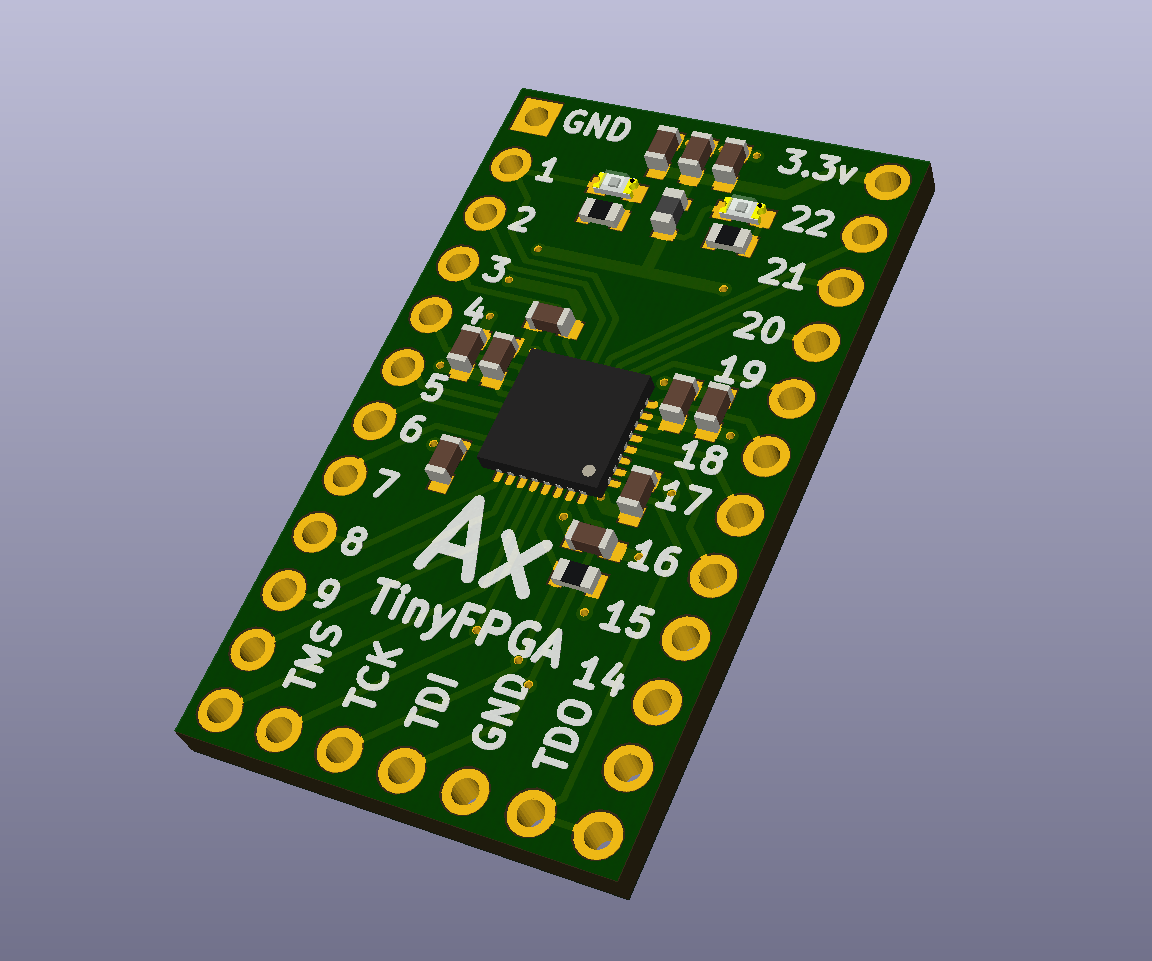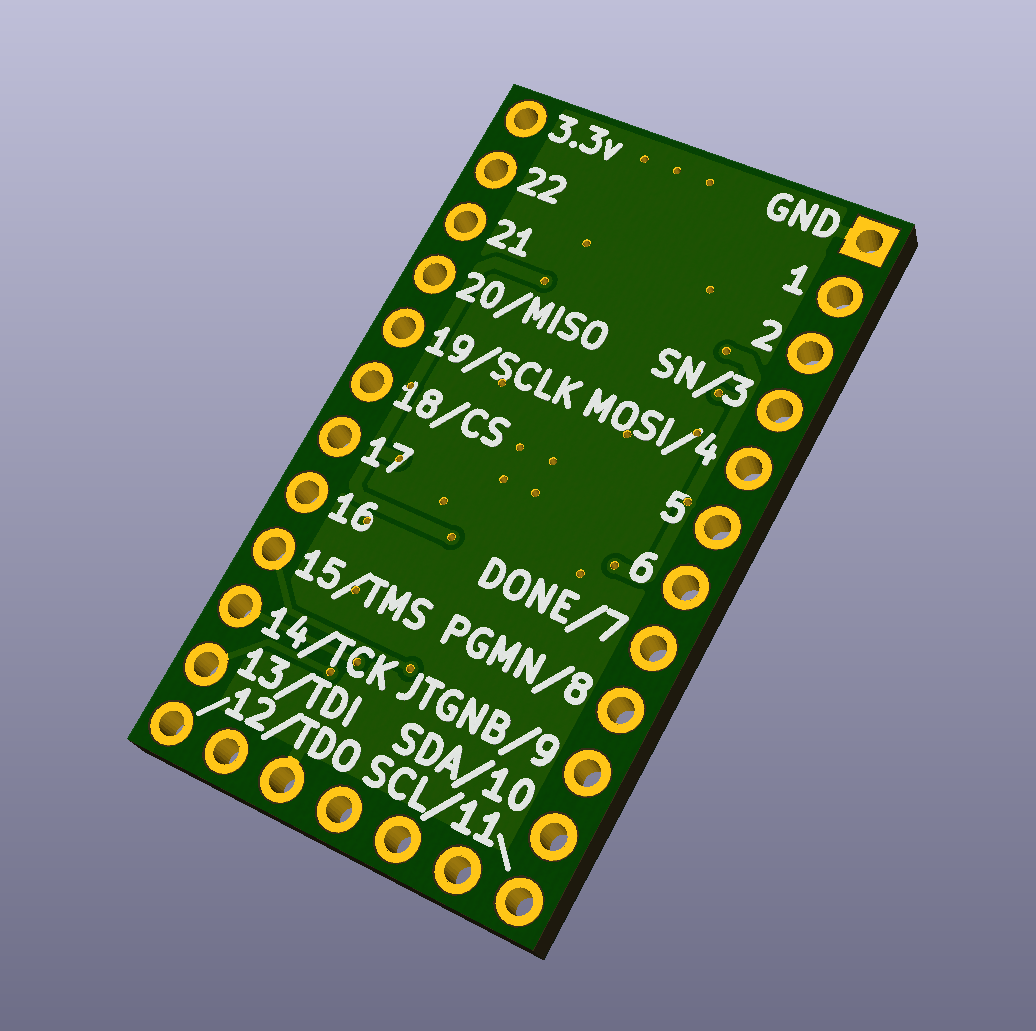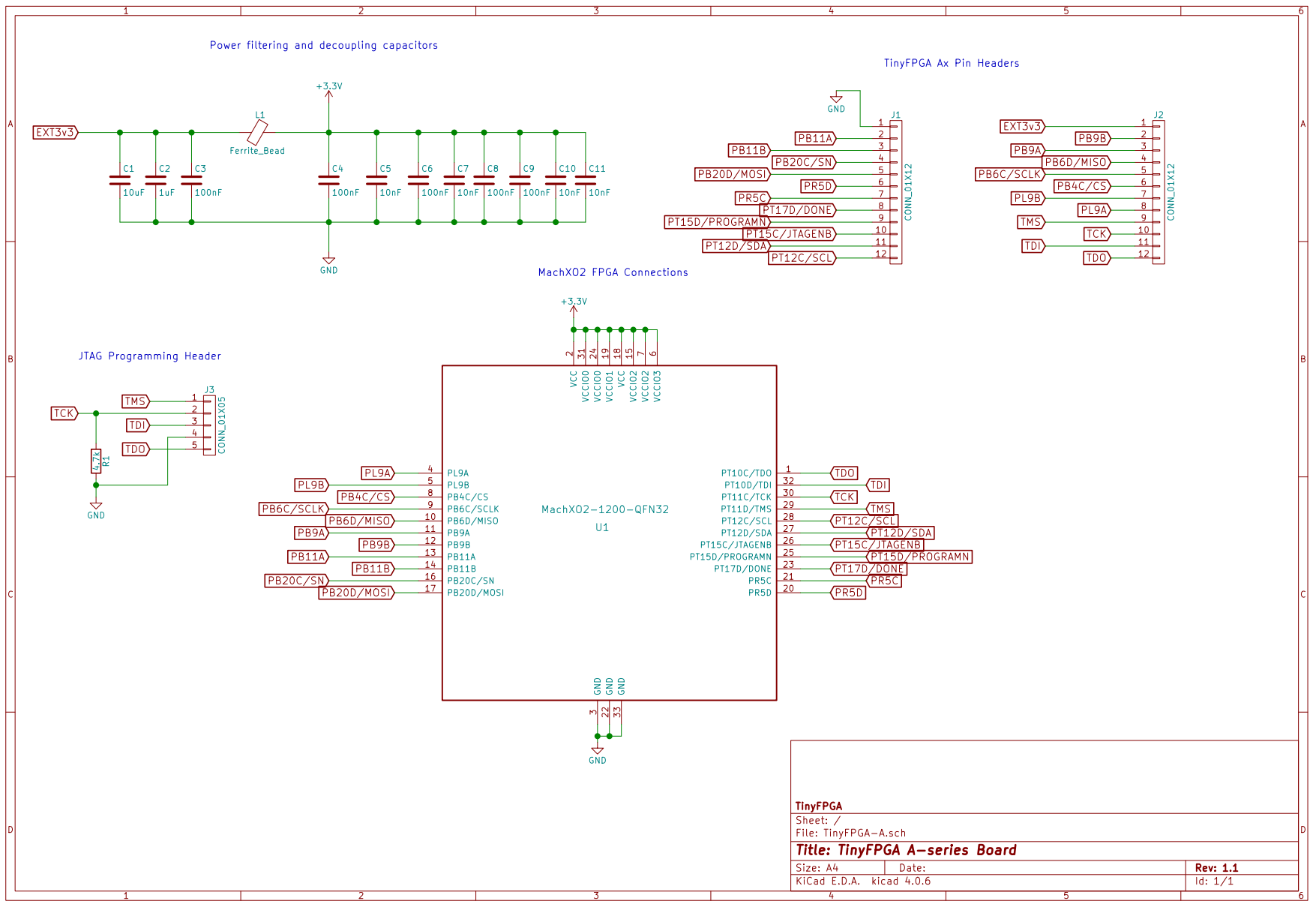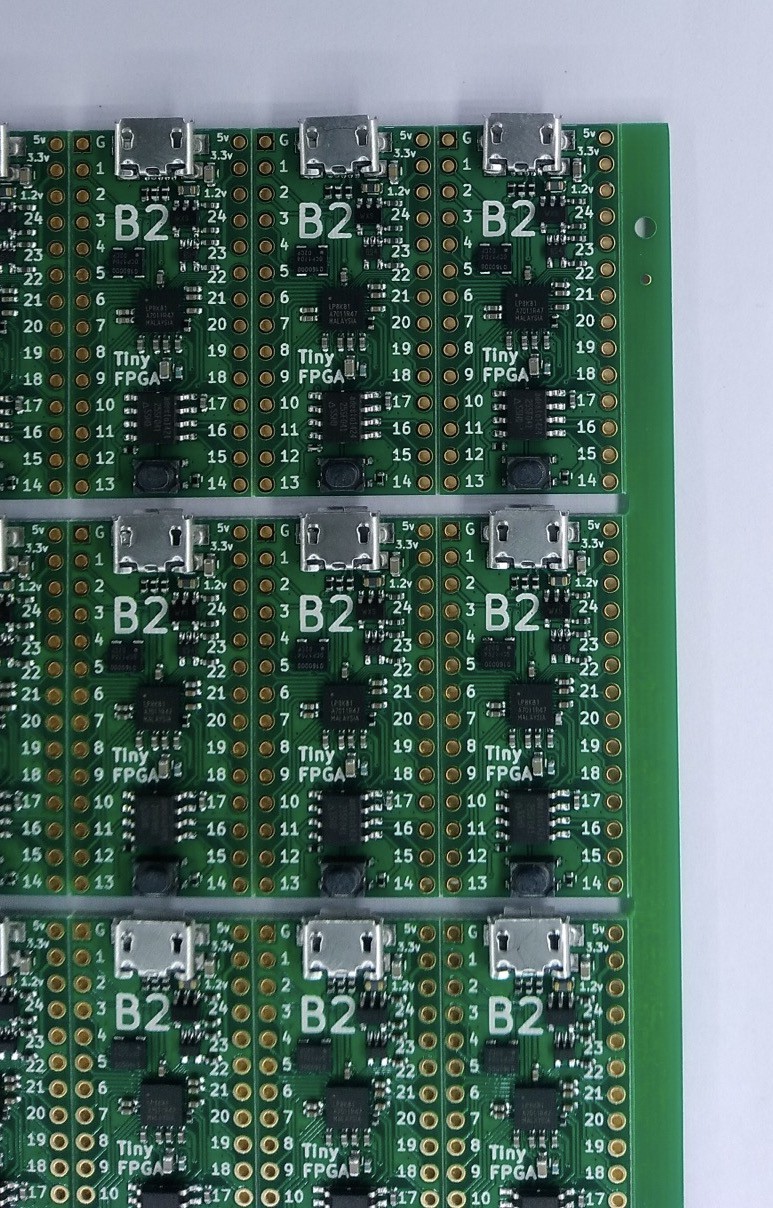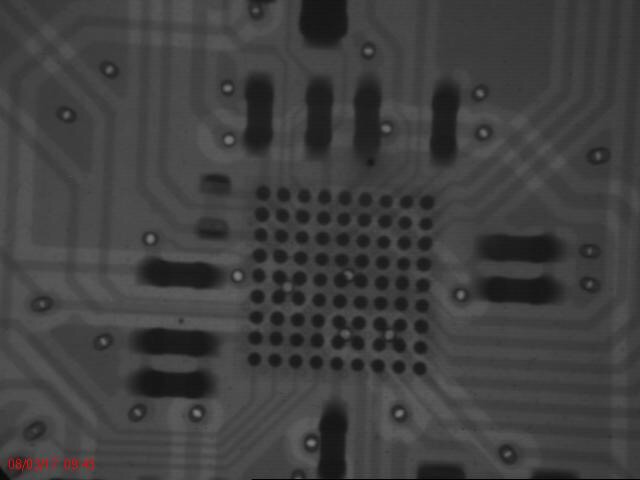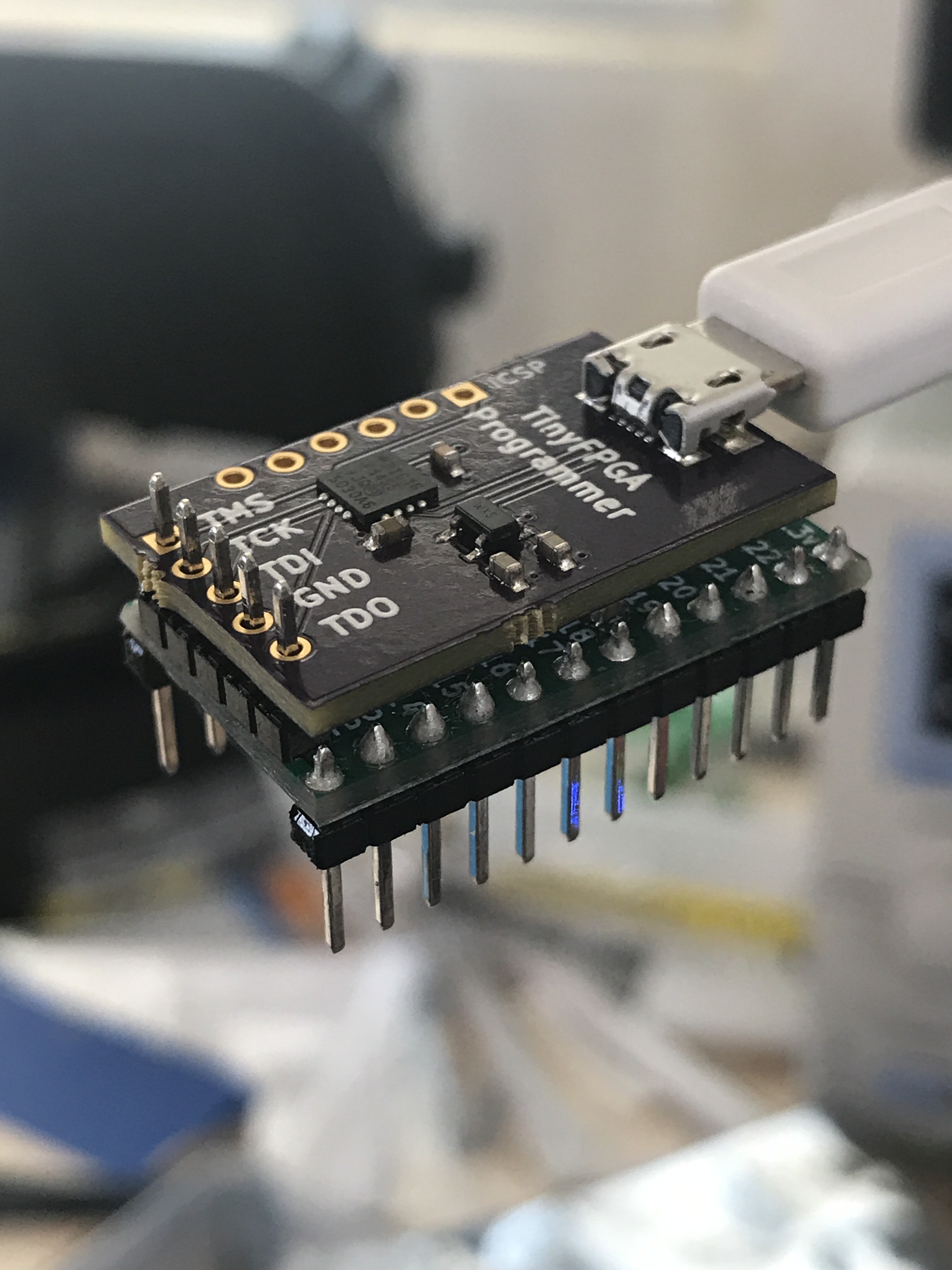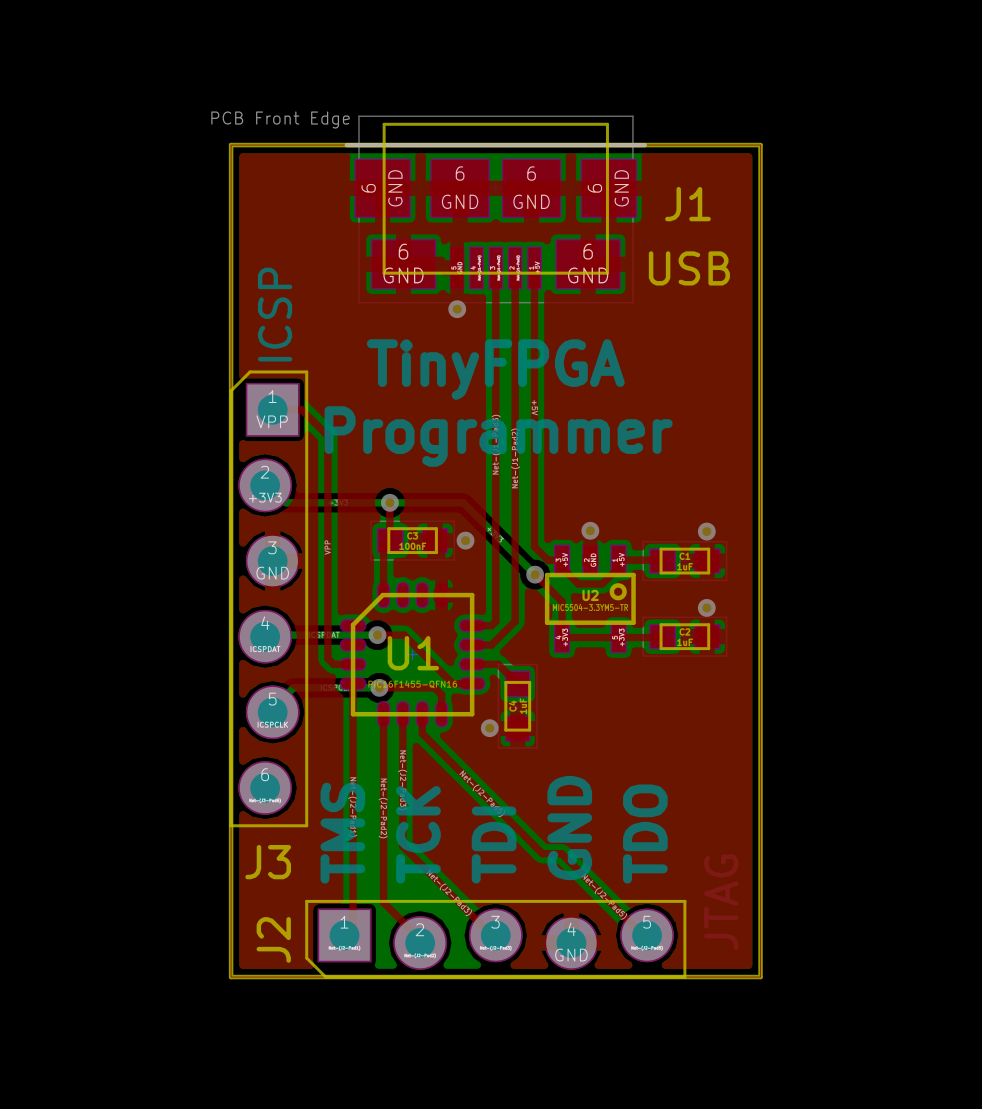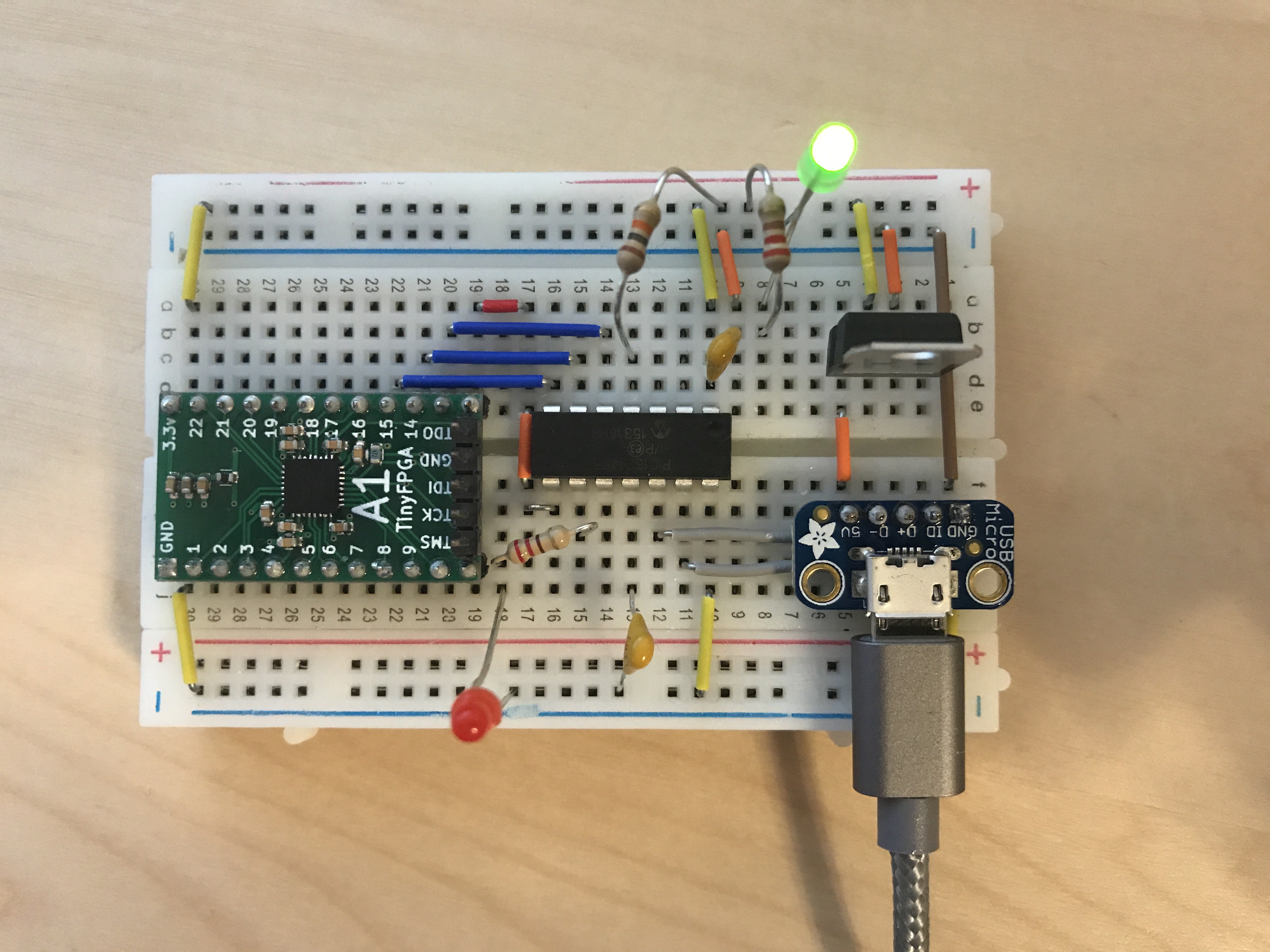-
TinyFPGA AX Boards in Production
01/03/2018 at 06:35 • 0 commentsThe TinyFPGA AX boards are currently in production. The PCBs are all fabricated and are now headed for assembly. If all goes well I should be getting them back by the end of January.
-
New AX Revision with LEDs!
12/25/2017 at 07:13 • 0 commentsMy A1 and A2 stock is running low and I have ordered a new manufacturing run. The major complaint of the A-series boards is that they are missing LEDs. I've added a power LED as well as a user-controllable LED to the boards. This will help with initial setup of the boards when just getting started and will allow for some basic trouble-shooting as well.
In addition to the LEDs the layout has been cleaned up somewhat with the power rail on the bottom layer being pushed to the edges to allow for a better ground plane. The silkscreen has also been updated to simply show "Ax TinyFPGA" as the board name. It will still be available with MachXO2-256 parts as well as MachXO2-1200 parts.
Everything else about the board is the same. These boards are fabricated and are awaiting FPGAs for assembly. Stay tuned in January and February for their arrival and sale!
-
Schematic PDF Available
10/07/2017 at 03:06 • 0 commentsI've finally gone over the schematics of all my projects and organized them a little bit so they are nice and easy to follow. For people that don't have KiCad installed, making the schematics available in PDF form is much more convenient and easy to share for quick reference.
You can view the PDF directly on GitHub: https://github.com/tinyfpga/TinyFPGA-A-Series/blob/master/board/TinyFPGA-A.pdf, or you can take a look at the image included below.
I've also started a new Hackaday.io project, #The Hobbyist's Guide to FPGAs. I'll be posting articles, tutorials, and hands on labs using the TinyFPGA boards as project logs. If this sounds interesting to you then follow the project to be updated when new content is posted.
-
TinyFPGA Programmer For Sale!
09/27/2017 at 03:09 • 0 commentsThe TinyFPGA Programmer boards are now for sale!
You can purchase them for $9 at the TinyFPGA Store. Unfortunately I'm unable to login to Tindie to update my Tindie store, but once that has been resolved they will be listed there as well.
For instructions on programming #TinyFPGA A-Series boards with the new programmer have a look at the updated TinyFPGA A-Series Guide.
Enjoy!
-
EEVBlog Mailbag
09/06/2017 at 14:43 • 2 commentsI sent in some boards a few weeks ago to the EEVBlog Mailbag. That "Crazy Aussie Bloke" had some fun poking at my soldering hall of shame and looking at some A-series boards. Check it out:
-
TinyFPGA B-Series Project Page
08/16/2017 at 05:52 • 0 commentsI'm due to get the production run of TinyFPGA B2 boards delivered in the next few days. There's a bit of work left to do for the B-series boards in terms of fixing some bugs in the USB device and building a pogo tester/programmer. I've started a dedicated project page for the B-series to log progress: https://hackaday.io/project/26848-tinyfpga-b-series
A picture of a panel I received from the assembly house:
And an x-ray image of the BGA package (with 0.4mm pitch!):
-
TinyFPGA Programmer Project Page
08/16/2017 at 01:01 • 0 commentsAssembled the first TinyFPGA Programmer boards and started a dedicated project page. Take a look: https://hackaday.io/project/26836-tinyfpga-programmer
-
TinyFPGA A-Series Programmer PCB
08/05/2017 at 05:17 • 0 commentsI will be out of town next week so I decided I might as well design and order some TinyFPGA Programmer boards now so they might be ready by the time I get back. It's a very simple design. It follows the breadboard circuit closely while substituting through hole components with their surface mount counterparts.
The schematic and PCB layout are currently available on GitHub if you want to take a closer look: https://github.com/tinyfpga/TinyFPGA-A-Programmer
If you look closely at J2 and J3 you'll see that the holes are offset a bit. I did this because I thought it would nice if some quick and dirty programming could be done without having to solder on headers. My thought for this board was to be a cheap and convenient alternative to the FTDI based programmers, 5-pin female sockets are relatively expensive around $0.70. That makes it the second most expensive part right behind the PIC16F1455. We'll see how well this works in practice when the boards come back.
I ordered the PCBs from OSH Park, stencils from OSH Stencils, and parts from Mouser. Should have some fun assembling them when I'm back in town. At that point I'll need to create a separate project page for the programmer.
-
Low-cost (or Free) A-Series Programmer
08/03/2017 at 05:39 • 0 commentsI'm working on a low-cost (or free) JTAG programmer for the A-series boards. There are some relatively low-cost JTAG programmers available on eBay, but it doesn't sit right with me to recommend people get those as the best available solution. They can be an unknown quality and it's a hassle to connect the jumper cables to the JTAG header. And the job could be done for a better price.
Here comes the A-series programmer. Based on a low-cost PIC16F1455 microcontroller it should handily beat the cost of a FTDI-based JTAG programmer. The downside is we lose compatibility with the official Lattice Programmer software, but this is not a big loss. The upside is a small, easy to use, low-cost, OSH JTAG programmer. I think that is worthwhile.
In addition to the PIC16F1455 firmware I will also be developing firmware that will work on Arduino compatible boards. If you have an Arduino compatible board then you'll be able to save a few bucks and use that to program your TinyFPGA boards.
Above is the protoype I'm using to validate my circuit design. The PIC16F1455 is able to calibrate its internal oscillator based on timing information from the USB host, this means no crystal is required which means a lower BOM cost. This microcontroller requires very little extra components to function. Awesome.
I've posted the initial PIC firmware to a new github project: https://github.com/tinyfpga/TinyFPGA-A-Programmer
I've elected to make the firmware "dumb" and the software running on the host computer "smart". So the firmware will be more like a GPIO controller. This way it is easy to reuse the same board for other purposes or fix bugs in the JTAG protocol by modifying some python code.
Next step is developing a nice Python library for controlling the GPIO pins, then a JTAG library on top of that, and finally a MachXO2 JTAG programmer on top of that. When I prove that JTAG programming works well with this circuit I'll design a PCB, send it to OSH Park, and assemble a few prototypes for further testing.
Stay tuned!
 Luke Valenty
Luke Valenty